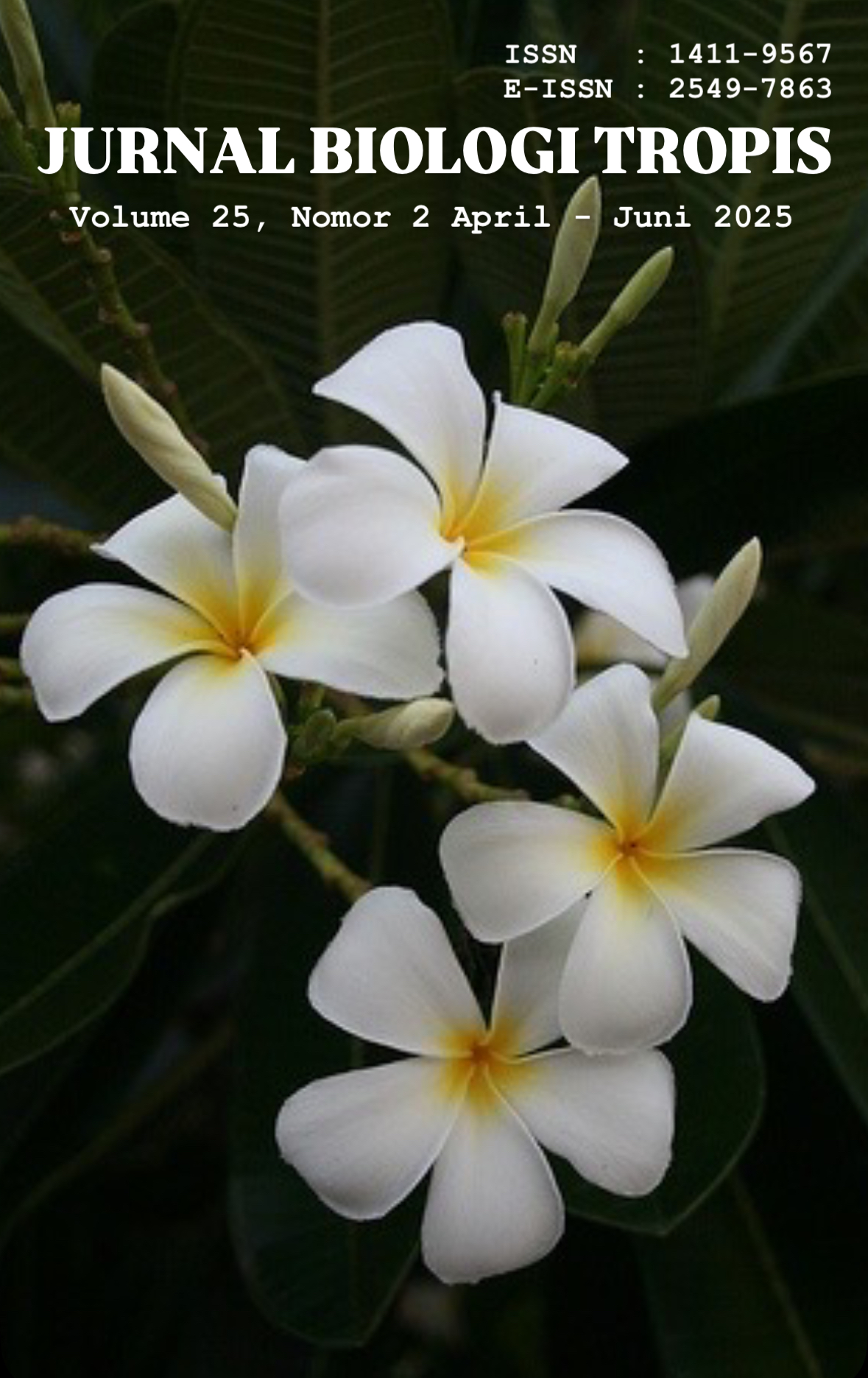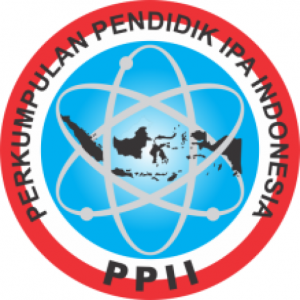Phenology of Flowering Time and Flowering Duration of Tomato Plants (Solanum lycopersicum L.) in Kamang Magek District and Padang City
Authors
Salum Azizah , Vauzia Vauzia , Moralita Chatri , Irma Leilani Eka PutriDOI:
10.29303/jbt.v25i2.8901Published:
2025-05-13Issue:
Vol. 25 No. 2 (2025): April-JuniKeywords:
Environmental conditions, phenology, tomato plants.Articles
Downloads
How to Cite
Downloads
Metrics
Abstract
Tomato (Solanum lycopersicum L.) is one of the horticultural commodities with high economic value whose growth is greatly influenced by environmental conditions. This study aims to examine the phenology of tomato plants, including the time of flowering and flowering duration in different environmental conditions as a basis for developing more effective cultivation techniques. The study was conducted in two locations, namely Kamang Magek District and Padang City, with 20 replications per location. Phenology observations were carried out on the time of flowering and flowering duration of tomato plants, and the data obtained were analyzed using the t-test at a significance level of 5%. The results showed a significant difference between the two locations, where the average time of flowering in Kamang Magek District was 38.5 days after planting (DAP) with a flowering duration of 10.85 days, while in Padang City the time of flowering occurred at 75.8 DAP with a flowering duration of 30.3 days. This difference indicates that environmental conditions in Kamang Magek District are more supportive of accelerating the flowering phase with a shorter flowering cycle.
References
Anggraeni, F. K. A., Herlia, N. F., Subagya, M. R., Rohmah, I. A., Lestari, D. A., & Mahmudi, K. (2024). Kajian Pengaruh Paparan Medan Magnet pada Pertumbuhan Tanaman Tomat. Optika: Jurnal Pendidikan Fisika, 8(2), 266–274. https://doi.org/10.37478/optika.v8i2.4188
Anggara, T., Shinta, D., Suryanto, A., & Ainurrasjid, A. (2017). Kendala Produksi Apel (Malus Sylvestris Mill) Var. Manalagi Di Desa Poncokusumo Kabupaten Malang (Doctoral dissertation). Brawijaya University.
Bita, C. E., & Gerats, T. (2013). Plant Tolerance to High Temperature in a Changing Environment: Scientific Fundamentals and Production of Heat Stress-Tolerant Crops. Frontiers in Plant Science, 4, 273. https://doi.org/10.3389/fpls.2013.00273
Fateha, R. N., Ilhaminnur, B., Soemarno, S., & Wandansari, N. R. (2020). Efektivitas Pupuk Organik dan Interval Penyiraman Terhadap Pertumbuhan dan Produksi Tomat. Agrotechnology Research Journal, 4(1), 33–40. https://doi.org/10.20961/agrotechresj.v4i1.41393
Hedhly, A. (2011). Sensitivity of Flowering Plant Gametophytes yo Temperature Fluctuations. Environmental and Experimental Botany, 74, 9–16. https://doi.org/10.1016/j.envexpbot.2011.03.016
Khotimah, K., Sudiana, E., & Pratiknya, H. (2022). Dampak Perubahan Iklim Terhadap Fenologi Phaseolus vulgaris L Faklutas Biologi Universitas Jenderal Soedirman. Bioma : Berkala Ilmiah Biologi, 24(1), 1–7. https://doi.org/10.14710/bioma.24.1.1-7
Kusumayati, N., Nurlaelih, E. E., & Setyobudi, L. (2015). Tingkat Keberhasilan Pembentukan Buah Tiga Varietas Tanaman Tomat (Lycopersicon Esculentum Mill.) pada Lingkungan yang Berbeda. Jurnal Produksi Tanaman, 3(8), 683-688.
Lawson, D. A., & Rands, S. A. (2019). The Effects of Rainfall on Plant–Pollinator Interactions. Arthropod-Plant Interactions, 13(4), 561-569.
Lestari, F. W., Suminar, E., Nuraini, A., Ezura, H., & Mubarok, S. (2020). Perubahan Viabilitas Pollen dan Anatomi Stomata pada Dua Mutan Tomat, Iaa9-3 Dan Iaa9-5, Akibat Cekaman Suhu Tinggi. Agrikultura, 31(1), 25-31
Lovane, M., & Aronne, G. (2022). High Temperatures During Microsporogenesis Fatally Shorten Pollen Lifespan. Plant Reproduction, 35(1), 9–17. https://doi.org/10.1007/s00497-021-00425-0
Olmo, D. I., Poza‐Viejo, L., Piñeiro, M., Jarillo, J. A., & Crevillén, P. (2019). High Ambient Temperature Leads To Reduced FT Expression and Delayed Flowering in Brassica rapa Via a Mechanism Associated with H2A.Z Dynamics. The Plant Journal, 100(2), 343–356. https://doi.org/10.1111/tpj.14446
Rahmah, S., Mardin, S., & Purwanto, P. (2021). Aplikasi Pupuk Daun yang Diperkaya Dengan Silika untuk Meningkatkan Pertumbuhan dan Hasil Tanaman Kacang Hijau (Vigna radiata L.). Jurnal Pertanian Peradaban (Peradaban Journal of Agriculture), 1(2), 17–27.
Sari, M. I., Noer, S., & Emilda, E. (2022). Respons Pertumbuhan Tanaman Labu Kuning (Cucurbita moschata) pada Cekaman Salinitas. EduBiologia: Biological Science and Education Journal, 2(1), 72–79. https://doi.org/10.30998/edubiologia.v2i1.11828
Servina, Y. (2019). Dampak Perubahan Iklim dan Strategi Adaptasi Tanaman Buah dan Sayuran di Daerah Tropis. Jurnal litbang pertanian, 38(2), 65-76.
Syakur. (2012). Pendekatan Satuan Panas (Heat Unit) Untuk Penentuan Fase Pertumbuhan dan Perkembangan Tanaman Tomat di Dalam Rumah Tanaman (Greenhouse). Jurnal Agroland 19 (2), 19(2), 96–101.
Triastinurmiatiningsih, T., Astuti, I. P., & Saskia, B. (2021). Fenologi Pembungaan Dua Varietas Jambu Air (Syzygium boerlagei) di Kebun Raya Bogor. LenteraBio : Berkala Ilmiah Biologi, 10(2), 153–158. https://doi.org/10.26740/lenterabio.v10n2.p153-158
Trimanto, T., Pitaloka, D. A., & Metusala, D. (2020). Karakterisasi Morfologi dan Fenologi Pembungaan Dua Aksesi Kopsia pauciflora Hook.F. Bunga Putih Dan Merah Muda Di Kebun Raya Purwodadi, Jawa Timur. Buletin Plasma Nutfah, 26(2), 77–88.
Wahid, A., Gelani, S., Ashraf, M., & Foolad, M. R. (2007). Heat Tolerance in Plants: An Overview. Environmental and Experimental Botany, 61(3), 199–223. https://doi.org/10.1016/j.envexpbot.2007.05.011
Wu, C., Cui, K., Wang, W., Li, Q., Fahad, S., Hu, Q., Huang, J., Nie, L., & Peng, S. (2016). Heat-induced Phytohormone Changes are Associated with Disrupted Early Reproductive Development and Reduced Yield in Rice. Scientific Reports, 6, 34978. https://doi.org/10.1038/srep34978
Xu, J., Wolters-Arts, M., Mariani, C., Huber, H., & Rieu, I. (2017). Heat Stress Affects Vegetative and Reproductive Performance and Trait Correlations in Tomato (Solanum lycopersicum). Euphytica, 213, 156. https://doi.org/10.1007/s10681-017-1949-6
Yanti, F., Jumini, J., & Marliah, A. (2021). Pengaruh Konsentrasi Pupuk Organik Cair terhadap Pertumbuhan dan Hasil Beberapa Varietas Tanaman Tomat (Lycopersicum esculentum Mill.). Jurnal Ilmiah Mahasiswa Pertanian, 6(4), 855–861 https://doi.org/10.17969/jimfp.v6i4.18331
Zhang, J., Jiang, X., Li, T., & Chang, T. (2012). Effect of Elevated Temperature Stress on the Production and Metabolism of Photosynthate in Tomato (Lycopersicon esculentum L.) leaves. The Journal of Horticultural Science and Biotechnology, 87(4), 367–373. https://doi.org/10.1080/14620316.2012.11512867
Ziladi, A. R., Hendarto, K., Ginting, Y. C., & Karyanto, A. (2021). Pengaruh Jenis Pupuk Organik dan Aplikasi Pupuk Hayati Terhadap Pertumbuhan dan Produksi Tanaman Tomat (Solanum lycopersicum Mill.) di Desa Sukabanjar Kecamatan Gedong Tataan. Jurnal Agrotek Tropika, 9(1), 145–151. https://doi.org/10.23960/jat.v9i1.4757
Zulbahri, Z., Darwin, D., & Devianti, D. (2019). Pengaruh Berbagai Macam Nilai EC (electrical conductivity) Terhadap Pertumbuhan Tomat Ceri (Lycopersicum esculentum) dengan Aplikasi Hidroponik Fertigasi Sistem DFT (deep flow technique). Jurnal Ilmiah Mahasiswa Pertanian, 4(4), 392–401
License
Copyright (c) 2025 Salum Azizah, Vauzia Vauzia, Moralita Chatri, Irma Leilani Eka Putri

This work is licensed under a Creative Commons Attribution 4.0 International License.

Jurnal Biologi Tropis is licensed under a Creative Commons Attribution 4.0 International License.
The copyright of the received article shall be assigned to the author as the owner of the paper. The intended copyright includes the right to publish the article in various forms (including reprints). The journal maintains the publishing rights to the published articles.
Authors are permitted to disseminate published articles by sharing the link/DOI of the article at the journal. Authors are allowed to use their articles for any legal purposes deemed necessary without written permission from the journal with an acknowledgment of initial publication to this journal.


























